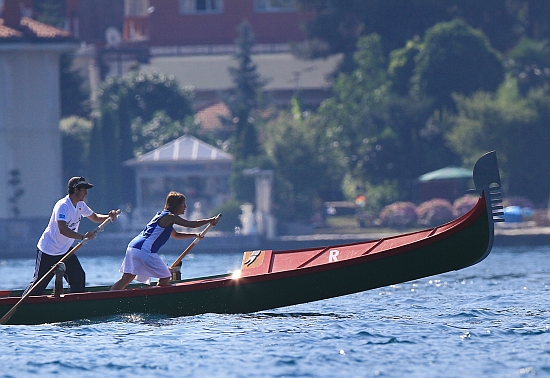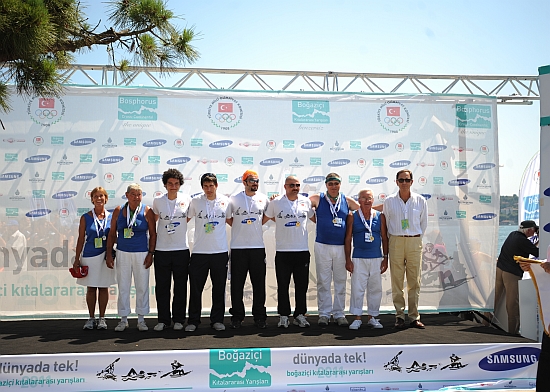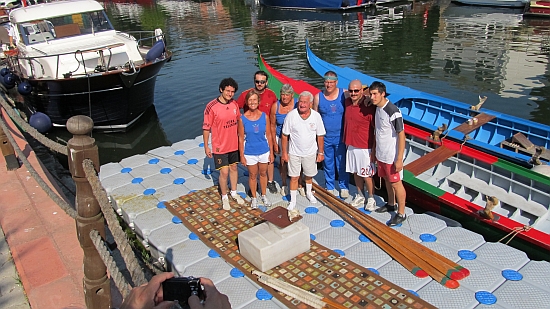Due to a small technical tangle, I couldn’t add much illustration to my post about the America’s Cup.
Now that the tangle has been untied, here goes:
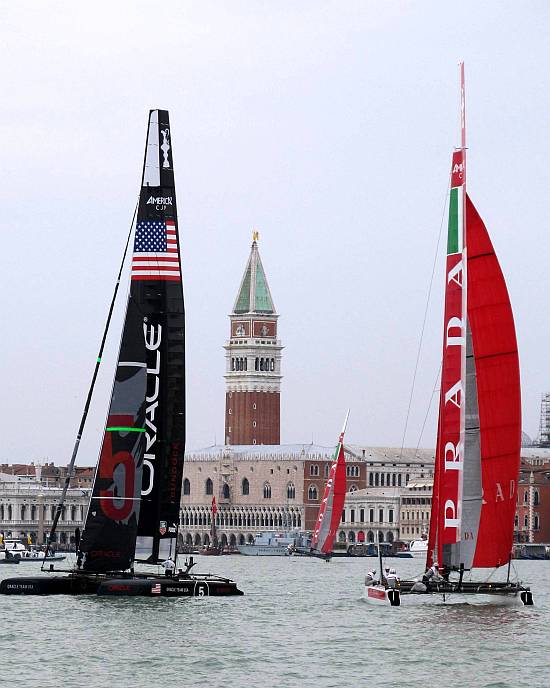

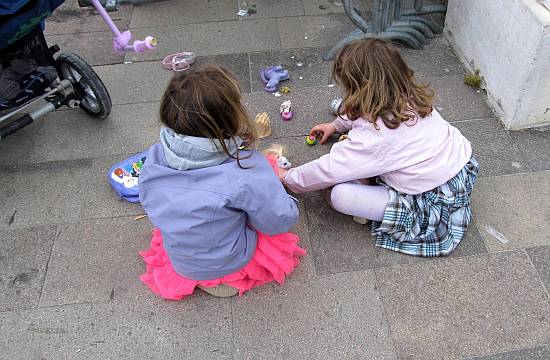

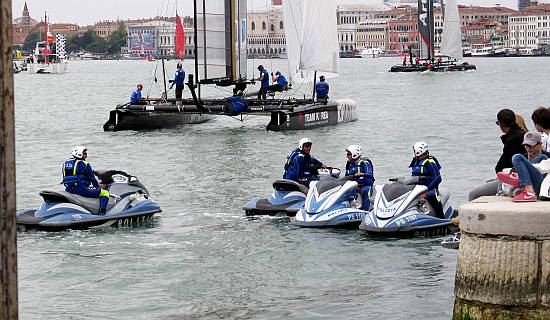
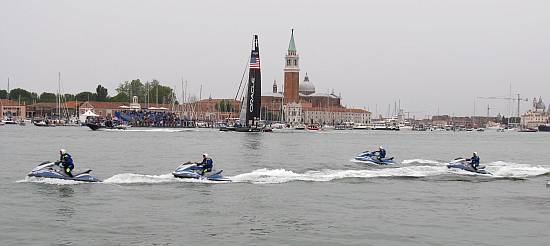
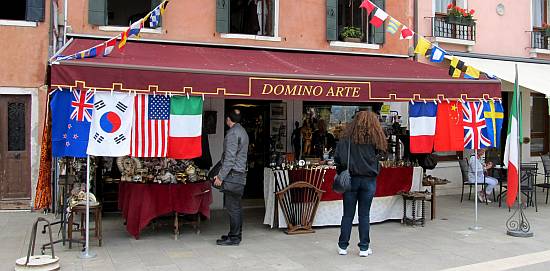
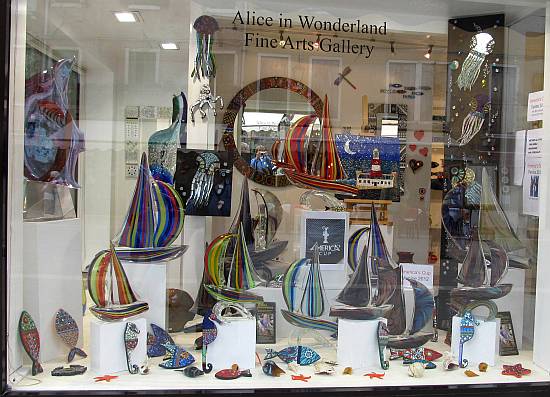
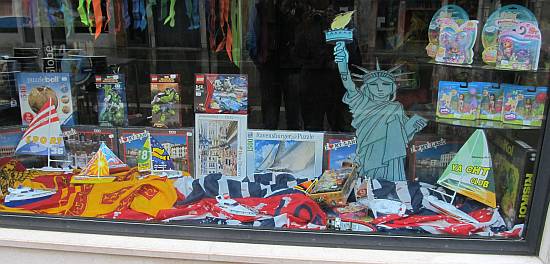
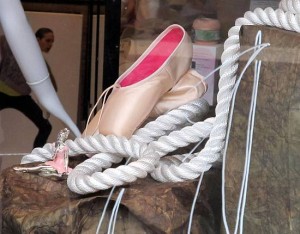
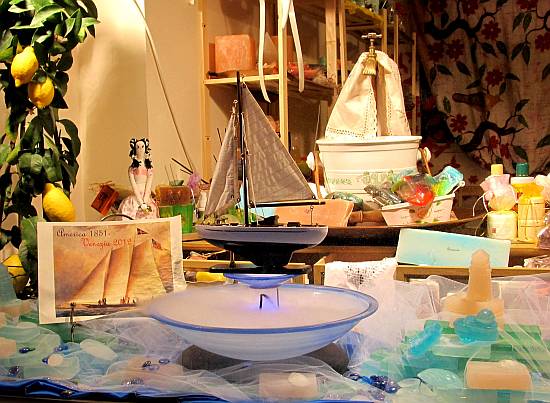
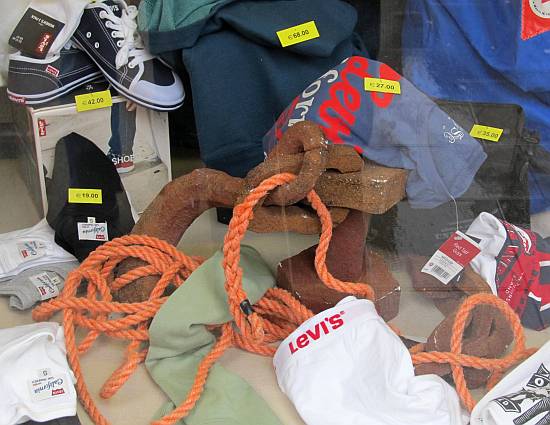


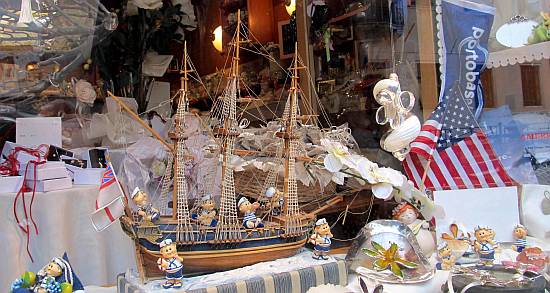
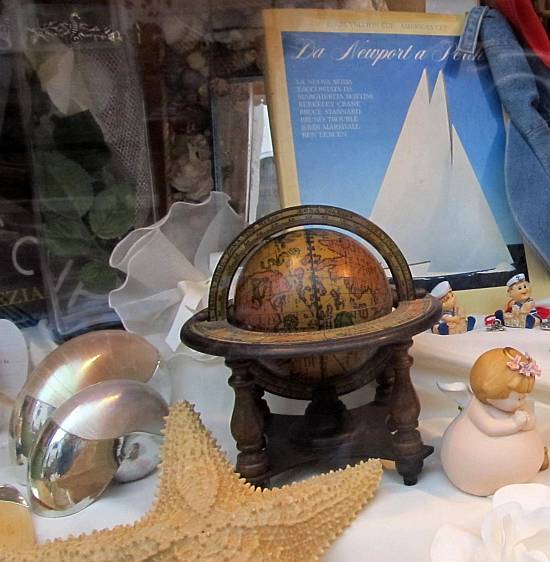
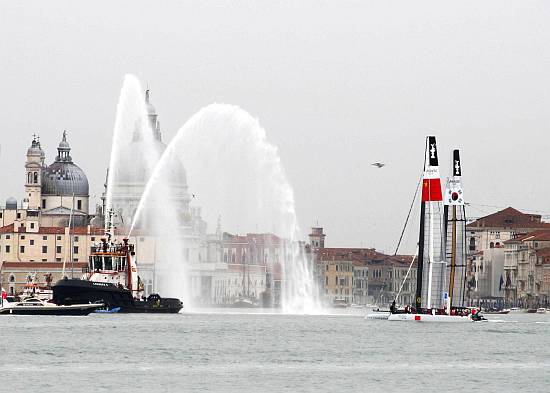

Due to a small technical tangle, I couldn’t add much illustration to my post about the America’s Cup.
Now that the tangle has been untied, here goes:


















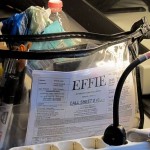
Every person who has come here in the last hundred years — and there have been a lot — has almost certainly said that the city looks like a stage set. This realization comes immediately after noticing there are canals instead of streets.
And if they haven’t said it, they’ve thought it.
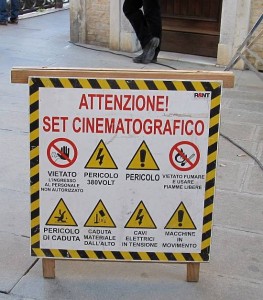
Venice makes the most of its stage-setness by offering itself as the location for at least a few segments of plenty of movies. Since I’ve been here I’ve come across bits underway of “The Italian Job,” “Casino Royale,” “The Merchant of Venice,” “Casanova,” “The Tourist,” “The Talented Mr. Ripley,” and a French feature named “Les Enfants du Siecle.” There may have been more. This is yet another way in which Venice resembles New York, including the fact that Venetians acknowledge all the fuss only in relation to how much inconvenience it causes them personally.
Evidently there are enough incentives to induce film companies to work here to offset the logistic challenges imposed by canals, tiny streets, lots of bridges, and skillions of people. I myself would hate to have to organize a film shoot — it’s hard enough organizing an ordinary day.
The latest movie to have cluttered the streets and canals with equipment and crew is called “Effie,” a biopic about the life of Effie Ruskin. It stars Dakota Fanning, a large number of non-Hollywood luminaries such as Emma Thompson and Derek Jacobi, and an Italian god in human form named Riccardo Scamarcio.
We were there as part of a group of members of Arzana‘, an association (of which Lino is a founding member) dedicated to the conservation of old Venetian boats of every sort. Whenever a film needs boats, the boats also need rowers, so anybody who applied and was chosen by the film company got a chance to participate in film-making for at least a day.
Lino and I went to the office, filled out the forms, got our portraits snapped, and waited to be called. He went three times, and I went twice.
So I urge you to see this film (it will be out in June 2012), because if nothing else interests you, you could peer in the darkness at the screen trying to discern a feminine figure in fusty nineteenth-century garb rowing a boat who could be me. I’m merely a human in human form, but I had a fantastic time as an extra.
Good thing I’m relegated to the background, though, because while the long skirts made me feel swell, the bonnet and slicked-back hair, all perfectly accurate, made me look like a Victorian cross between the Witch of Endor and Baba Yaga. If I’d been born in Effie’s time they’d have killed me in my cradle.
Lino didn’t come out much better. What with him and his cloth cap, high collar and muttonchop whiskers, and me with my shawl and apron and hat, we looked like a pair of Dickensian hobbits.

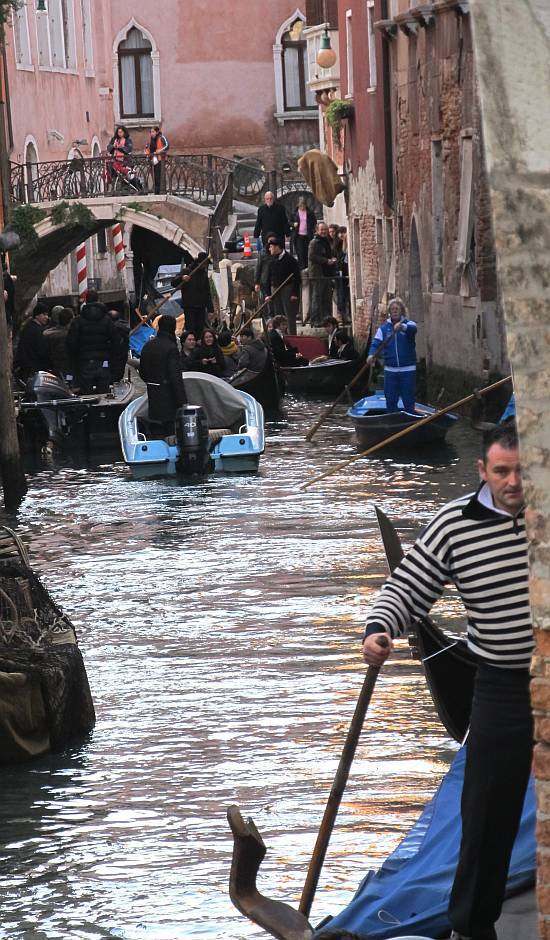
I had two days on duty. Most of the first day was spent watching the six hours or so of activity involved in shooting two minutes of film. We stood in the sun and ate loads of the free sandwiches the help was carrying around and watched an amazing amount of activity which seemed to happen without anyone telling anyone else what to do. Then we went inside and ate lunch.
At 3:00 Lino and I went to be dressed and titivated. When that was done, we climbed into a small mascareta and took up our positions on a stretch of small canal. By now it was 6:00 PM and getting dark, but lights were blazing everywhere.
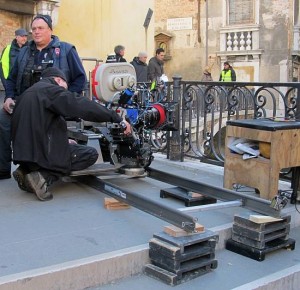
Our task, once the cameras started rolling, was to row very slowly along a snippet of canal only about 200 feet long (67 meters), which we accomplished in about a minute and a half. Also being rowed along the canal, in one or the other direction, was a battella and two gondolas, both replicas of the 17th-century version. One of the gondolas carried Effie and her husband, John Ruskin. By the look of things they were not happy. “There was,” as Dorothy Parker once wrote, “a silence with things going on in it.”
We repeated this slow row many times. I felt fine, except for my feet, which aren’t used to wearing shoes with heels (my costume included thin-soled mid-heel boots they’d given me to wear, even though nobody, not even me, ever saw my feet). The air wasn’t especially cold — thankfully, there was no wind — and God knows I wasn’t hungry.
At 10:00 PM it was quitting time. We changed our clothes in record time (the costume crew standing by to help), the makeup girl took off my hat and ripped out the 3,491 bobby pins which she had rammed into my skull to anchor my hairpiece, and we ran downstairs to the boats. Now we had to really row, to get them all back to the boathouse and tied up for the night.
Rowing at night is bewitching. There is almost no traffic, so you can actually hear the water murmuring under your boat; the distances and proportions are mysteriously transformed, and the combined effect is impossible to resist. There we were, sliding along the black glistening water flanked by prodigious palaces, virtually alone (I ignored the lone vaporetto), in a universe created by giants. And it belonged only to us. I’m not going to pretend these things don’t affect me, even after all this time. “My God,” I thought, “I’m rowing up the Grand Canal.”
Lino isn’t impervious to this allure, either; he said practically the same thing, and he’s been doing this all his life. Because there is no way to resist the sorcery of this city at night.
During the day, the city just lies there and dispenses, in a bored sort of way, a steady supply of small doses of beauty and splendor, just enough to make people want to take lots of pictures. But at night, she hurls caution and hauteur aside and utterly swamps you in a deluge of grandeur and seduction.
It was getting on toward midnight, but we didn’t want it ever to end.
Two days later, we were out in force on the Grand Canal doing a modified isn’t-the-city-busy sort of rowing around. It was sunny and warm, which is pleasant but sort of inane, and we got almost no food. You see how demanding I’m getting to be? And we didn’t row all that much, either.
We finished before sundown and the boats were back in their stalls before dark. No magic this time. But just as they say you can get so accustomed to chocolate that it just doesn’t do anything for you anymore, the same must be true of rowing at night. If we did it all the time, I suppose it would become boring.
I’m ready for the next film, whatever it might be. They can call me anytime — and I don’t care if they make me look like a mutant psychopathic canal-dredger.
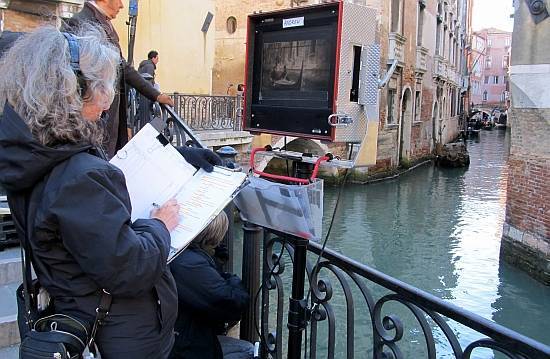
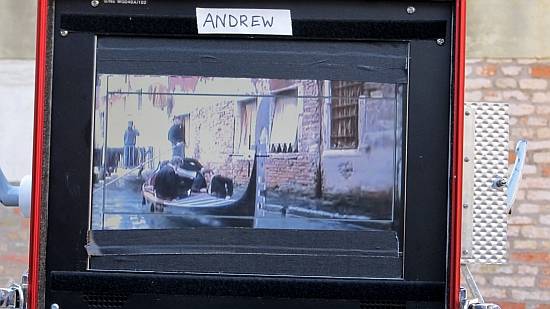
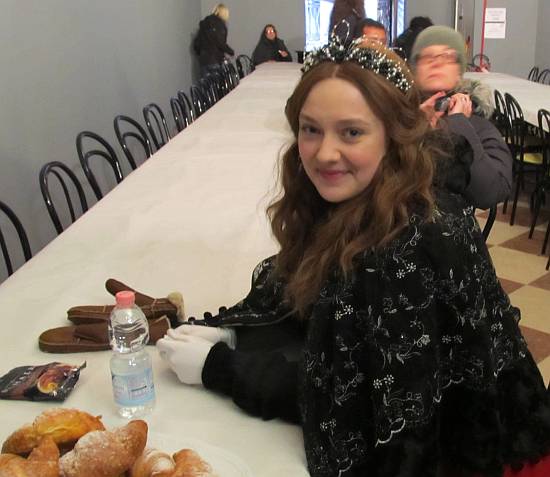
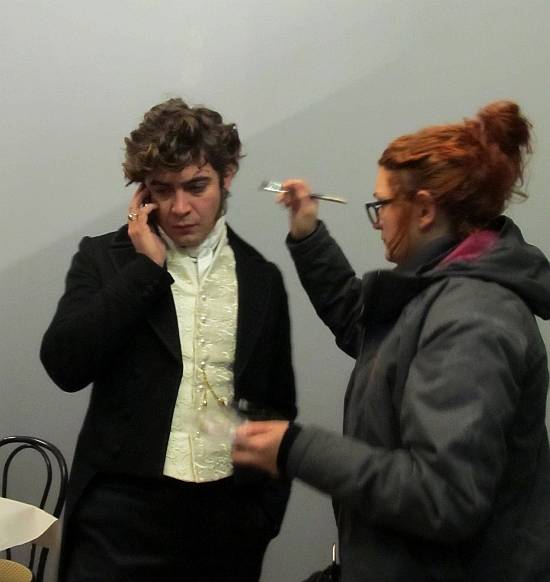
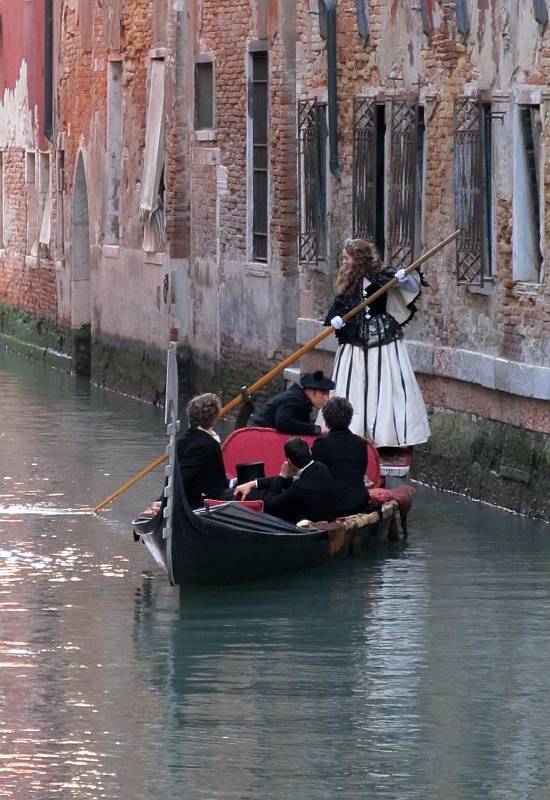


Last Saturday I went to watch one of my favorite Venetian rowing races: The regata of Santa Barbara, an annual contest on six-oar caorlinas organized by the discharged sailors’ association in honor of Saint Barbara, patron saint of seamen and, by extension, of the Navy.
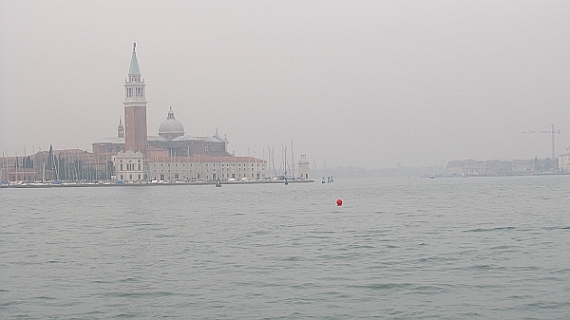
For every Regata Storica, there must be ten races held every month here (I’m making this number up — maybe it’s more), winter or summer, by rowing clubs, gondoliers, and assorted groups of every sort. And don’t think that just because there isn’t any prize money that these races aren’t fought to the finish.
Technically, Saint Barbara’s day is December 4, but Saturday was more convenient for everybody and no doubt the good saint took it in stride. After all, her bones supposedly lay in a cupboard somewhere on Murano for about 400 years, so she’s fully aware of the prevailing attitude toward time here.
The crew of each boat was composed of four gondoliers who had done their (formerly compulsive) military service in the Navy, plus one boy from the Scuola Navale Militare F. Morosini, where Lino teaches rowing. For the first time in 15 years, there was also one fireman.
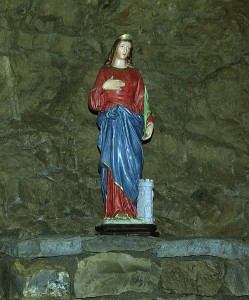
The firemen weren’t there to quell any spontaneous combustion; Saint Barbara is their patron saint too. Generally speaking, she is assigned to watch over anyone who is dealing — intentionally or not — with things that go “boom.” If there are explosives, fire, or lightning involved, or the threat of sudden, violent, incendiary death, she is your go-to saint, and specifically protects sailors, firemen, artillerymen, miners, sappers, road-builders, geologists, mountaineers, petroleum workers, and the U.S. Navy and Marine Corps Aviation ordnancemen. Also bell-ringers and architects — maybe there’s a link to high towers with no lightning rod. This list is not exhaustive, by the way, I just decided to stop.
Trivia alert: A powder-magazine or other storage area containing explosives is often referred to as the “santabarbara.”
It rained and fogged. This is typical. There have been times in the past 15 years when the sun beamed down on victors and vanquished alike but usually there’s water. Perhaps this is a helpful gesture from the saint, who abhors fire.
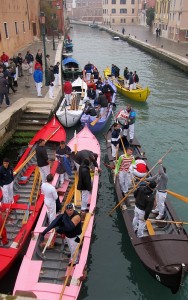
There were all the usual components: Competitors who have known each other since before they were born, the benediction of the boats, the traditional pennants for the first four boats to cross the finish line, and other prizes offered by sponsors (Pasta Zara sent everyone home with a neat box containing two kilos of pasta), bottles of wine, even small trophies of Murano glass, presumably not in memory of Saint Barbara’s sojourn on the island.
There were assorted dignitaries, including an admiral, some of whom gave impromptu speeches into a microphone which could have used a dash of nitroglycerine to wake it up. Nobody listens anyway. The speeches were, also according to tradition, too long, too rambling, and often more than a little bit too self-congratulatory. I will not name names but I know who they were.
The prizes were given, the photos were snapped, then everybody headed for the buffet. As I have often mentioned, “Every psalm ends with the Gloria,” as they say here, and every event ends with food and drink.
And tradition requires — or maybe Saint Barbara requires, she being an extremely practical saint, it seems to me — that there should be pasta e fagioli. Not only at this race, but at 98 percent of amateur races here. Pasta and beans are hot, filling, delicious, hugely good for you and can be made in massive batches reasonably far in advance. Trivia alert: Beans such as the borlotti used around here contain more protein than red meat, though I don’t think anybody cares.
So carry your bottle of Beano and dig in. Or plan to spend the rest of the day outdoors, in the fresh air. For a gondolier, that’s obviously no problem. They often go back for seconds.
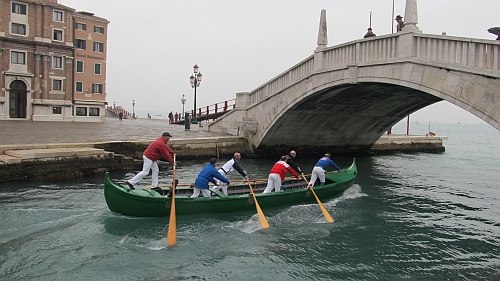
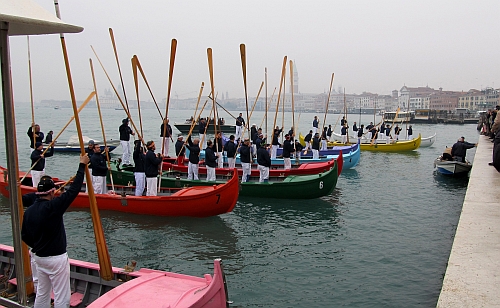
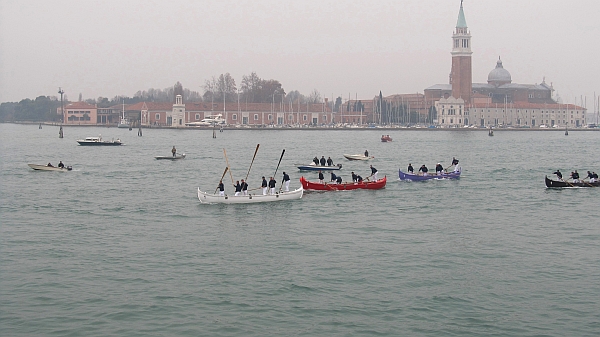
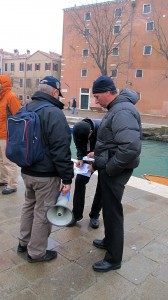
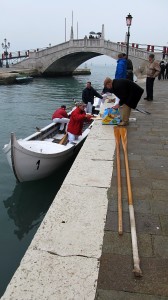
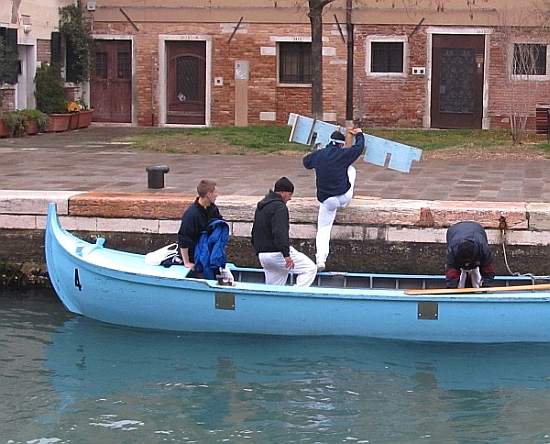

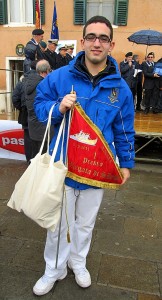
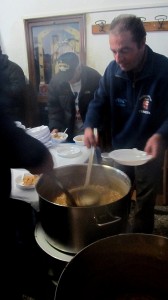
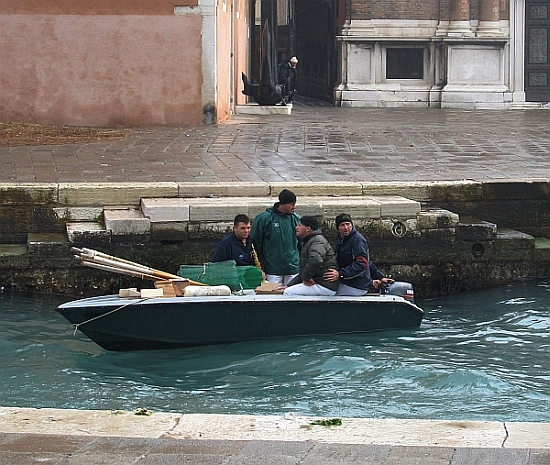
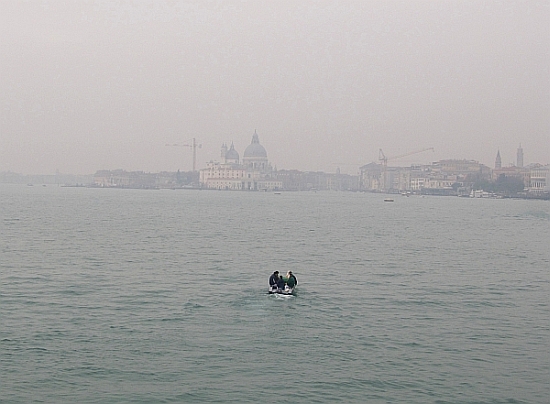
Would you like to know how to say “So big your mind vaporizes in front of it” in Turkish?
Answer: “Bogazici.”
In English it’s “Bosphorus,” which is actually Greek, but whatever you want to call it, you’ll say it standing at attention.
And we were out there on July 17, four of us from Venice and four Turkish men, in two gondolas, rowing across it.
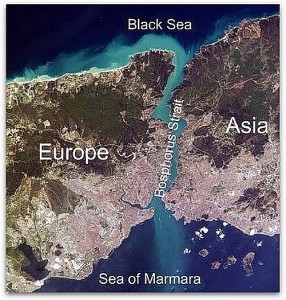
So what’s so big about it? In normal human terms, the world’s narrowest strait used for international navigation isn’t all that big. It’s about 31 km/17 nautical miles long and its maximum width is 3,329 meters/1.7 nautical miles and its minimum width is a mere 704 meters/.38 nautical miles. But unless you need to pilot a tanker of liquefied natural gas or something, these numbers don’t tell you its true dimensions.
When you row out onto it in a four-oar gondola, the whole concept of size suddenly multiplies in every direction. I knew there were currents and vortexes and so on, though Lino in the stern knew how to deal with them so I, rowing in the bow, didn’t pay much attention. But I didn’t know then that the Black Sea to the north and the Sea of Marmara to the south flow toward each other with differing densities, which forms an underwater river in the Bosphorus which, if it were on the surface, would be the sixth largest river (in volume, I presume) on earth.
It’s probably better I didn’t know that.
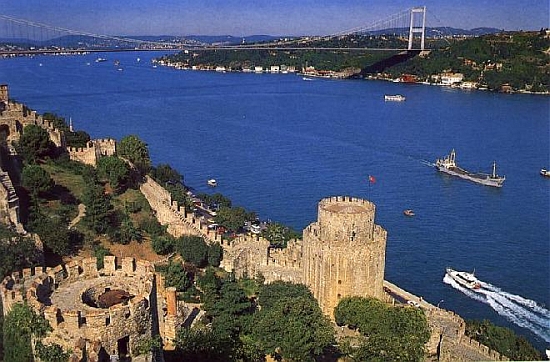
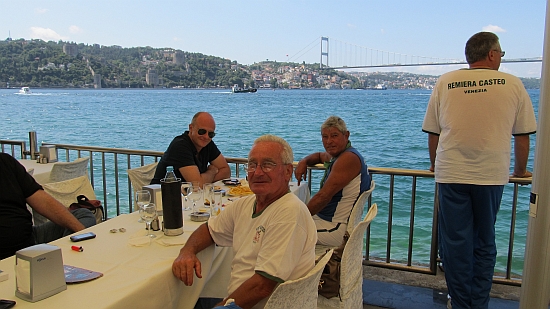
What I did feel was not only the mass of water under us, I felt the mass of history bearing down on this strip of sea which by now is so heavy there ought to be a black hole there instead of mere water. It’s not every day I get to row around in front of a Turkish fortress built in 1451 to enable the Ottoman assault which conquered Constantinople in 1453.
And just for the record, Lino told me later than when we rowed out there, he had a lump in his throat, for the very same reasons I was listening to my brain spinning its wheels saying “I cannot believe I’m out here doing this.” The fact that he could get emotional is a great thing — and that he could be dealing with the throat-lump while also keeping track of the vortexes is even better.
Gondolas on the Bosphorus — how weird is that? Despite the fact that, somewhere back in history, there were plenty of boats our size being rowed all around here, we were thrillingly tiny. Under the soaring Fatih Sultan Mehmet suspension bridge the passing ocean-going tugboat and the double-decker tourist boats and the random tanker, all of which seemed to have three-million-horsepower motors and created waves the size of Quonset huts, made rowing a fairly unusual thing to be doing out here. Possibly the people aboard the aforementioned craft thought so too, though I’m not sure we even showed up on their radar. Certainly the tourists were excited to see us, waving and snapping pictures, though only God knows what they were thinking as we passed. They certainly weren’t thinking about the massive wake they were leaving behind them.
So we were there just to be weird? Mais non, mon capitaine. Thanks to the collaboration of His Excellency Gianpaolo Scarante, the Italian Ambassador to Turkey, we were invited to be the opening number in the spectacle of the Bosphorus Cross Continental, an annual event organized by the Turkish Olympic Committee, the only swimming event in the world which involves two continents.
Some 1,200 swimmers plunge into the water like penguins off an ice floe from a dock on the Asian shore of Istanbul and swim to the European side, a distance of some 6 km/3.8 miles, with the bonus of having to turn around and do the last stretch against the current.
But Venetian boats in Istanbul? Of course there were plenty here when it was Byzantium, and plenty even after it became Constantinople. But given much of the history between Venice and Turkey, it was a very cool thing to be there all together — two Venetians and two Turks per boat — with absolutely no ulterior motive, like buying, selling, or slaying.

Traffic is blocked for four hours to smooth the stage for the mob of Australian-crawlers (and the small pod of dolphins we saw arcing around the finish line). If delivery of your new plasma TV is held up, maybe you could blame it on this. In any case, we also benefited handsomely from this blockade, benefited, that is, until about ten minutes from the finish line, when two double-decker tourist boats carrying the swimmers upstream passed by. The swimmers waved at our brilliant strangeness and beauty but didn’t notice the wake. Our gondola stolidly took the three or four walls of water head-on — womp, womp, womp — but it isn’t good for the boat and it really slowed us down. When you’re panting to reach the finish line, hot and sweaty, being slowed down is intensely annoying. Still, compared to the gymkhana of yesterday, with waves from everywhere, it wasn’t so bad.
Lino’s and I, with Ata and Samet on the red-and-green gondola, finished second. I don’t say we lost, nor do I say the blue gondola won, because the boats were totally mismatched in several technical but telling details. Also, it wasn’t supposed to be a genuine race; Ata and Samet, and Burak and Mehmet, had only tried Venetian rowing twice in their lives, on Friday afternoon and Saturday morning. It’s just that the desire to see no one in front of them overcame the sporting good sense of our adversaries. I didn’t care if they came in first. I did care that they did it by five or six boat-lengths.
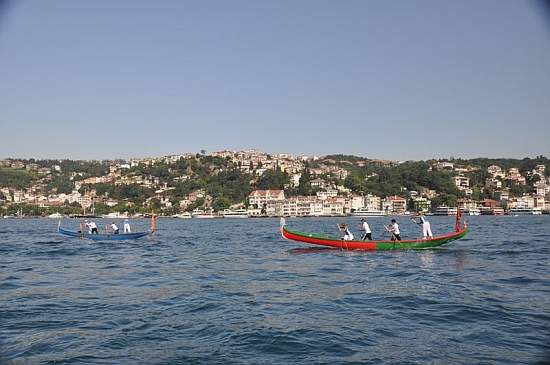
So what could be next? I’d be perfectly happy if we were to be able to do this again next year. Otherwise, unless we find a way to tackle the Bering Strait, or maybe the Strait of Malacca, I’m going to leave this experience in lonely splendor at the top of a list of one, labeled “If this doesn’t astound you, you must be completely missing your astound-o-meter.”
